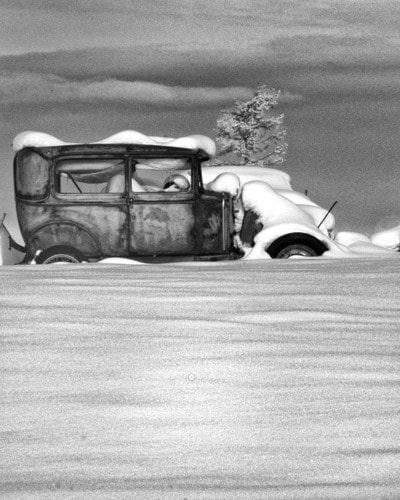Photographers always tell me that they are participating on some kind of photo challenge or another: a photograph-a-day for a year, or once-a-month for some specific time, or some have even decided to follow a particular subject through each season. I like the idea, however, I expect dedicating time to making a photograph every day (unless one works in a busy studio and is doing it as part of the work day) could become quite a chore.
Personally, I have tried projects that require that kind of stick-to-it dedication, but I get side tracked easily and rarely complete what I started. Last February I thought I might photograph a bridge a month. I live near a big river so how hard could that be? I did get a few and then I just forgot.
When it comes to my personal photography fun stuff just happens. For example, it was one of those days when I was too lazy to do the stuff around the house that I should have been doing. I was reading some, and just thinking about photography in general. Okay, for me thinking about photography isn’t that unusual, it is actually what I prefer to do.
I was lazy, reading and thinking about how I should have a photo project. Okay, the project: drive up the road a couple miles and photograph neighbour’s places poking out of the snow, and do it with my infrared camera which is fun. Criteria: Hope for some sun.
I have an older digital SLR camera (Nikon D100) that has been modified to only see infrared light. Infrared (IR) light is light that has longer wavelengths on the red edge of the spectrum and is invisible to human eyes.
The sensors for digital cameras are sensitive to more than just the visible light spectrum. This causes problems with colour balance, so camera manufacturers place a filter in front of the sensor that blocks the infrared part of the spectrum that only allows visible light, and not infrared, to pass through. The modification for my D100 was accomplished by removing that filter, and installing one instead that blocks visible light, allowing mostly infrared light to reach the camera’s sensor.
The camera still functions normally with full autofocus and autoexposure, except that it’s now able to record the infrared wavelengths that are just beyond what the human eye is capable of seeing. When infrared photographs are produced as black and white the photographs show trees with glowing white leaves and black skies opening up new visual opportunities for photographing the world around us.
Many think of infrared photography as the stuff of military night reconnaissance, or, as frequently portrayed in movies, as aerial thermal imaging that finds the bad guys. With thermal imaging one sees the heat the subject is producing, however, infrared as photographers use it, with our modified cameras, is about capturing the light or radiation that is reflected off a subject and doesn’t involve thermal imaging at all.
In 1800 Sir Frederick William Hershel described the relationship between heat and light and let the world know about the existence of infrared light in the electromagnetic spectrum.
I don’t know how conversions are accomplished with modern sensors. With my old D100 I need to preset the white balance and be aware of a meter that is easily tricked with the white snow. I must check my camera histogram after every release of the shutter and usually make two or three exposures just in case. However, everything appears normal through the camera’s viewfinder. Also, because so much light reaches the sensor one can use high shutter speeds and so it is easy to hand hold while exposing a photograph.
I would have liked a clear sky with more sun to increase the infrared effect, but the high clouds let in just enough light to make things interesting and challenging. Some subjects don’t work very well with infrared, so I just experiment, take lots of pictures and hope for the best. I knew on that not-so-bright-day my images would take some work with PhotoShop and NIK’s SilverEfex.
Infrared photography is fun. I was only out wandering my neighborhood for a little over an hour before I hurried home to work on what I got. Everything changes when one is working with infrared, forcing even the least creative among us to think creatively. I can leave my images with blue trees the LCD displays or move the white balance off the preset to cloudy and get red and black pictures instead.
Opening an image file in PhotoShop is always a bit of a surprise and from there on its all experimenting and personal vision. Yes, infrared is fun.
These are my thoughts this week. Contact me at www.enmanscamera.com or emcam@telus.net. Stop by Enman’s Camera at 423 Tranquille Road in Kamloops. And if you want an experienced photographer please call me at 250-371-3069. I also sell an interesting selection of used photographic equipment.
